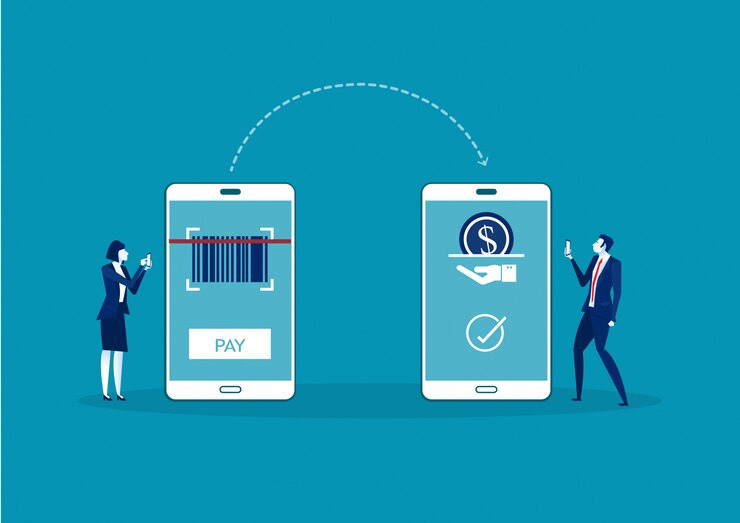The role of currency exchange rates in cross-border money transfers

Currency exchange rates are the heart of every cross-border transaction. As a business, you should understand the complexity of transferring money across cross-borders.
Exchange rates can significantly impact the amount your customers receive or pay during international transactions. By understanding these rates, you can better serve your customers and improve their experience.
These exchange rates act as an invisible handshake between currencies, to determine the value of your customer’s money abroad.
To have a reliable cross-border payment solution, you need to have a solid grip on exchange rates. It empowers your business to offer a reliable cross border payment solution for your customers.
To offer a seamless international remittance service to your customers, you need to have a detailed understanding of the exchange rate in foreign markets.
Let’s get started with the blog.
What are currency exchange rates?
Currency exchange rates represent the value of one currency in relation to another. These rates indicate how much one currency is worth when exchanged for another.
Currency exchange rates are of two types.
- Fixed-rate
This rate is set by a government or central bank and remains within a narrow band. It’s also known as a currency board regime.
- Fluctuating rate
This rate fluctuates because of the change in the value of one currency related to another. It is primarily because of demand and supply.
Importance of exchange rate in cross-border money transfers
Currency exchange rate has a huge impact on international money transfers. They will tell you how much of one currency is exchanged for another. A small difference in the rate can significantly impact the recipient’s amount.
An accurate understanding of currency exchange in cross-border money transfers ensures smoother transactions and builds customer trust.
Why do exchange rates fluctuate?
These rates fluctuate constantly due to different factors like economic conditions, geopolitical events, and market demand. You have to understand these fluctuations as it is critical for providing accurate and competitive rates.
How do exchange rates affect cross-border money transfers?
Exchange rates have two side effects on your customer’s cross border remittance transactions.
One is the recipient amount and another is the transaction cost. Let’s understand how those work.
Impact on recipient amount
Exchange rates directly determine how much the recipient receives. A favorable rate maximizes their funds, while an unfavorable one reduces the value.
For instance, if a client sends $1,000 when the exchange rate is 1 USD = 75 INR, the recipient gets ₹75,000. However, if the rate drops to 1 USD = 73 INR, the recipient only gets ₹73,000. Even a slight drop impacts the final amount significantly.
Effect on transaction costs
Exchange rate margins, processing fees, and intermediary charges add to the cost of transactions. If rates are unstable, clients may face unexpected expenses. Offering transparency in these costs can enhance their trust in your services.
Factors that influence currency exchange rates
Many factors influence the currency exchange rate. And they have a direct impact on the prevailing exchange rate.
Economic and political factors
Interest rates, inflation, and political stability significantly impact exchange rates. A strong economy usually results in a stronger currency, which affects cross-border transfer costs.
Supply and demand dynamics
If there is a high demand for a particular currency, then it can push its value higher.
As a bank, you have to stay informed about these factors to allow you to predict rate movements and help your clients make informed decisions.
Hidden costs in currency exchange
Currency exchange often comes with hidden costs that can impact the final amount that your customers receive. These costs include margins, transfer fees, and intermediary charges. As a business, you should understand how to address these hidden expenses. It helps you provide transparency among your customers.
Margins in exchange rates
Many providers include a margin in the base exchange rate to cover operational costs. Clearly communicating these margins allows clients to better understand the overall cost of a transfer and make informed decisions.
Offering competitive margins or clearly explaining these charges can make your services more appealing.
Importance of transparency
Break down the exchange rate, fees, and margins for your customers. Transparency builds trust and strengthens customer relationships.
Technology’s role in managing exchange rates
Technology is transforming the way you manage currency exchange rates and ensures processes are more efficient and accurate.
Real-time rate tracking
Real-time tracking tools provide up-to-date information on currency rates. These tools help you offer competitive rates and protect clients from sudden fluctuations.
API integration for accuracy
APIs integrate seamlessly into your platform to automate rate updates. They ensure your systems reflect the latest rates. It also further reduces the errors and enhances the accuracy of your transactions.
How can you mitigate FX rate risks?
Currency rate fluctuations can pose remarkable risks to cross-border transactions. To reduce this risk, you can offer flexible options like holding funds in multiple currencies or scheduling transfers when rates are favorable.
Hedging strategies
Hedging protects your clients from unfavorable rate changes. Techniques like forward contracts lock in a rate for future transactions, reducing uncertainty.
Multi-currency wallets
With a multi-currency wallet, your customers can keep and use money from different countries all in one place.
They help minimize conversion costs and provide flexibility in managing cross-border transactions.
The bigger picture: exchange rates and global trade
Exchange rates influence more than individual transactions—they shape global trade and economic growth. They impact the cost of imports, exports, and investments.
Impact on international commerce
Exchange rates influence global trade and foreign investments. Your services contribute to smoother financial transactions worldwide.
Role of financial institutions
As a financial institution, your role extends beyond providing competitive rates. You act as a bridge in facilitating seamless global trade.
By offering transparency, advanced technology, and effective risk management, you empower your clients to expand their businesses globally.
Conclusion
Currency exchange rates shape the cost and outcome of every cross-border money transfer. They influence the recipient’s amount, transaction costs, and even the broader dynamics of global trade.
By focusing on transparency, adopting technology, and managing risks effectively, you can enhance the value of your services. Your expertise can position you as a trusted partner in simplifying cross-border payments and fostering global financial connectivity.
You can use this knowledge to enhance your services and contribute to global financial connectivity.










